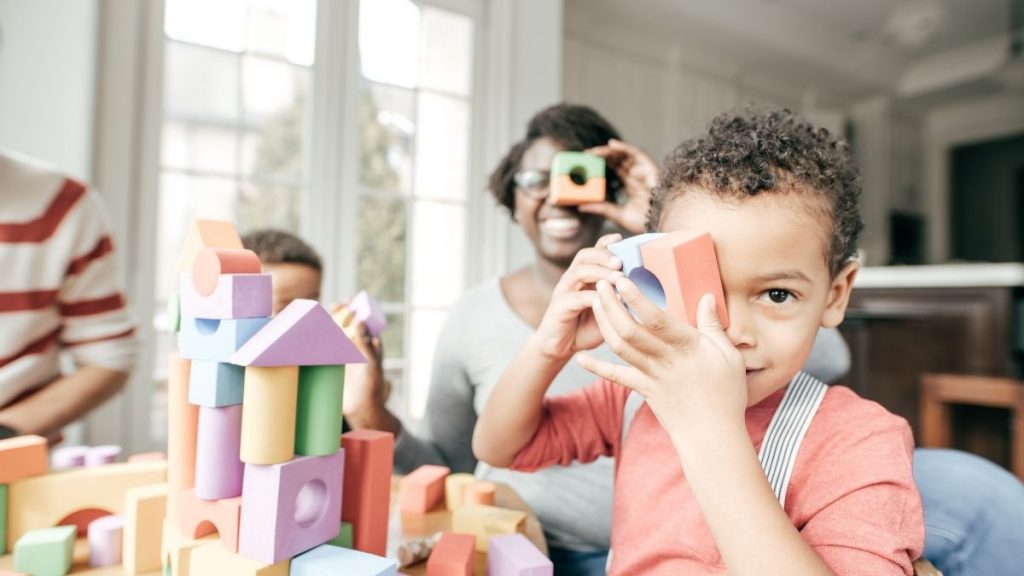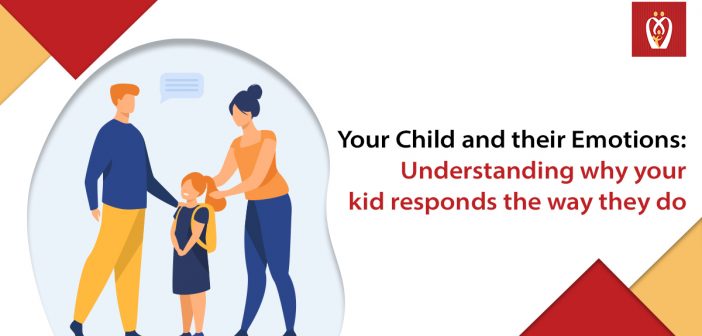Introduction
Children, like adults, have complicated sentiments. They experience frustration, excitement, nervousness, sadness, jealousy, fear, worry, anger, and embarrassment. However, most young children lack the words to express their emotions. Instead, they express their emotions in different ways.
Children can communicate their emotions through facial expressions, body language, behaviour, and play. Sometimes, they may express their emotions in inappropriate or harmful ways at times. Children begin acquiring the emotional abilities required to recognise, express, and control their feelings the minute they are born. They learn how to do so through social interactions and connections with significant individuals in their lives, such as parents, grandparents, and caregivers.
As a parent, you have a critical role in helping your children understand their emotions and behaviours. Children must be taught how to regulate their emotions positively and constructively. When children learn to control their feelings, they develop favourable attitudes and behaviours later in life.

emotions in kids
Understanding emotions in kids
Simple techniques may go a long way when it comes to many parenting issues with developing children. However, now and then, a particularly vexing parenting problem arises—the type that refuses to yield in the face of our tried-and-true positive reinforcement, firm limits, or distraction. Some circumstances necessitate a closer investigation. One such issue is understanding emotions in kids.
According to research, parental mentalising to attempt to understand our own and our children’s behaviours through the lens of underlying mental states such as thoughts, feelings, and needs—can assist us in getting to the heart of the most challenging parenting situations. Parents who can mentalise can detect the less visible and immediate causes of their children’s actions.
For example, when a kid is upset, we may be tempted to respond with a strong consequence, such as a time-out or taking away something the child enjoys, such as a cherished toy or technology time. On the other hand, a parent who mentalises may sense the anguish behind the child’s apparent rage and respond in a way that directly tackles that pain and treats the source of the problem.
It turns out that parents who think about their children get a variety of rewards. For one thing, their children develop stronger attachment security, which occurs when youngsters feel safe and secure in their interactions with their parents. Furthermore, in one experiment, parents who mentalised more for their children persevered longer in attempting to comfort a fictitious screaming infant. This demonstrates how reflecting on children’s ideas and feelings may provide us with the mental flexibility to explore several methods to reacting to their suffering.
Not surprisingly, children with more mentalised parents can better manage their own emotions, engaging in greater self-regulation and -soothing. Furthermore, new research shows that mentalising may be especially essential when parents or children are under stress or trauma. For example, among those who were more stressed, those who mentalised most acted compassionately toward their children.
Mentalising offers benefits for the parents as well. Mentalizing allows us to focus on our feelings as parents, offering insight into why our children’s activities elicit such powerful reactions in us. For example, after being reprimanded for inefficiency by a coworker one day, a mother may understand that her displeasure with her kid’s limit-testing behaviour is exaggerated—ultimately connected to her job problems rather than her child. Such clarity can help us recognise the real cause of our emotions, which can then help us regulate them.
How to understand emotions in kids?
As a parent, it is critical to promote your child’s cognitive development from the moment they are born since this lays the groundwork for your child’s success in school and later in life. For example, research suggests that toddlers who can identify sounds at six months of life are more likely to acquire the abilities needed to read at the ages of four and five. In addition, you may help your child’s cognitive development by giving them options and encouraging them to make informed decisions. You should also encourage your youngster to experiment with different problem-solving strategies.
While you may want to provide mild direction and encouragement, give your youngster some time to work things out, just like you would with a new puzzle. This may need some patience on your side, but it will ultimately aid in their learning. Finally, learning to recognise and healthily express feelings helps children acquire the skills necessary to regulate them properly. Here are some suggestions for encouraging your child to communicate their emotions.
- It might be challenging to recognise sensations at times. Look at your child’s body language, listen to what they’re saying, and observe their behaviour to get a sense of how they are feeling. Understanding what they are experiencing and why they are feeling allows you to assist them in better identifying, expressing, and managing their feelings.
- Attempt to comprehend the meaning and emotion underlying your child’s behaviour. Once you understand what is causing the behaviour, you may assist your child in finding alternative methods to express themselves.
- Give your children a label to help them name their emotions. Naming feelings is the first step in teaching children to recognise them. It enables your kid to build an emotional language, allowing them to express their emotions.
- Make it a point to give them plenty of chances to recognise their own emotions. For example, you might ask your youngster to consider how someone else is experiencing. Cartoons or picture books are a fantastic method to talk about feelings and teach children how to recognise other people’s emotions via facial expressions.
- By seeing others, children learn about feelings and how to express them correctly. Demonstrate to your child how you feel in various situations and how you cope with those feelings.
- When your child expresses or talks about their feelings in an acceptable manner, praise them. Not only does it demonstrate that sentiments are normal and that it is OK to express them, but it also encourages the behaviour, making it more likely that they will repeat it.
- Stay attentive and resist the desire to alleviate your child’s distress. Instead, assist in identifying and expressing the emotions in kids so that they are heard. When sentiments are minimised or disregarded, they frequently manifest in harmful ways.
How Nurturey PinkBook helps in cognitive development in children?
Nurturey Pinkbook is the smartest digital upgrade to the NHS red book. Tracking your child’s growth and development has never been more informative, intuitive, and simple with tools like Vaccinations, Measurements, Milestones, Dental, and more. In addition, the advanced health algorithms in the PinkBook ensure that parents get reminders, alerts , and health insights throughout their parenting experience. Parents may view their child’s health data, make appointments with the GP, refill medicines for themselves and their family, and access NHS articles and videos straight from the NHS systems resulting in an interactive health experience through its NHS GP integration. With the PinkBook constantly changing, the NHS red book’s future is digital, smart, intelligent, and intuitive.
Conclusion
Children who can recognise, comprehend, express, and regulate a wide range of emotions enhance their mental health and well-being in the long run. And parents can help understand those emotions in kids and help them deal with their feelings better.







